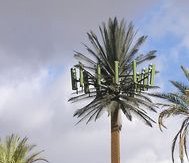sudo apt-get install xinetd
sudo apt-get install libX11-dev
sudo apt-get install xlibs-dev
tar -xzvf VMware-server-1.0.2-39867.tar.gz
cd vmware-server-distrib/
sudo ./vmware-install.pl
Client Install:
unzip VMware-server-linux-client-1.0.2-39867.zip
tar -xzvf VMware-server-console-1.0.2-39867.tar.gz
cd vmware-server-console-distrib/
sudo ./vmware-install.pl
Made it so the VMware console (port 902) does not listen on all interfaces:
sudo vi /etc/xinetd.d/vmware-authd
bind = 127.0.0.1
I did not enable host-only networking during install. To reconfigure VMware server:
sudo /usr/bin/vmware-config.pl
My important settings:
Would you prefer to modify your existing networking configuration using the
wizard or the editor? (wizard/editor/help) [wizard] editor
The following virtual networks have been defined:
. vmnet0 is bridged to eth0
. vmnet1 is a host-only network on private subnet 172.16.173.0.
. vmnet2 is bridged to eth1
In which directory do you want to keep your virtual machine files?
[/var/lib/vmware/Virtual Machines] /data/vm
Samba:
sudo apt-get install samba
Add samba user:
sudo smbpasswd -a dustin
/etc/samba/smb.conf:
workgroup = NETJITSU
interfaces = vmnet1
writable = yes
path = /data/
Samba will not listen on anything other than my host-only network.
For some reason my changes did not take effect upon Samba restart. A manual stop then start did it:
sudo /etc/init.d/samba stop
sudo /etc/init.d/samba start

